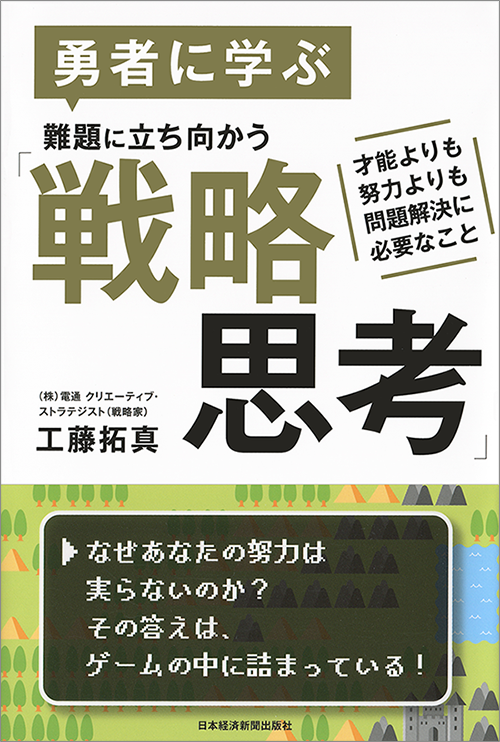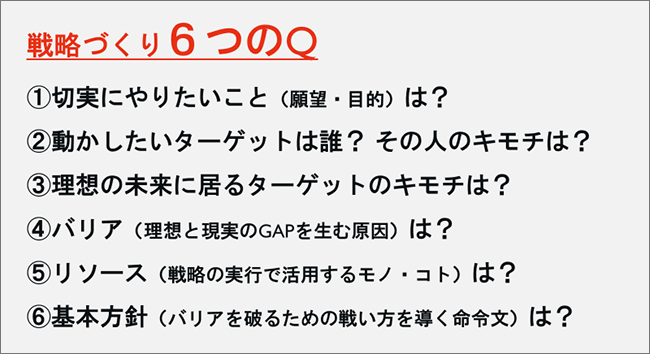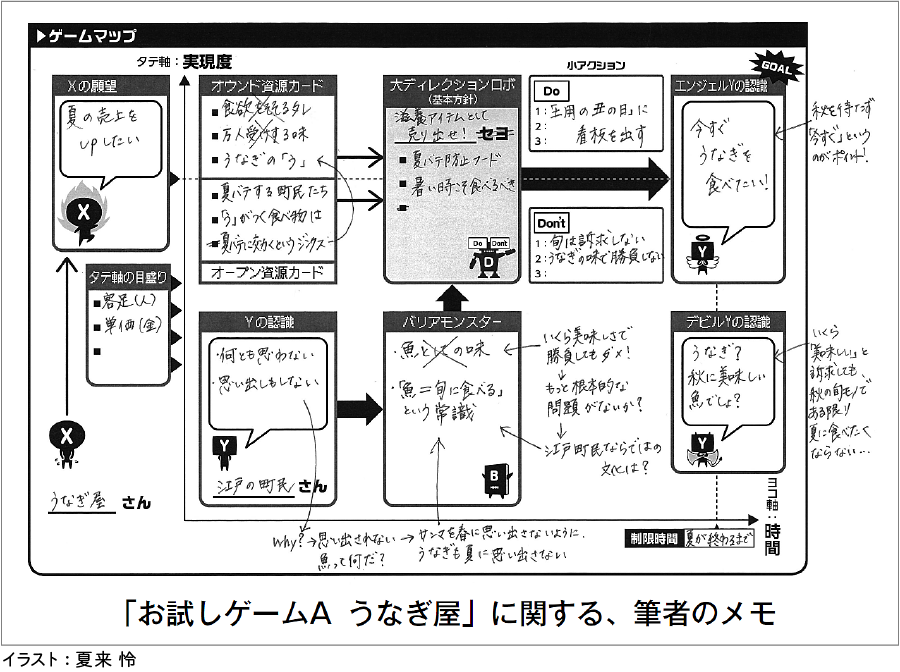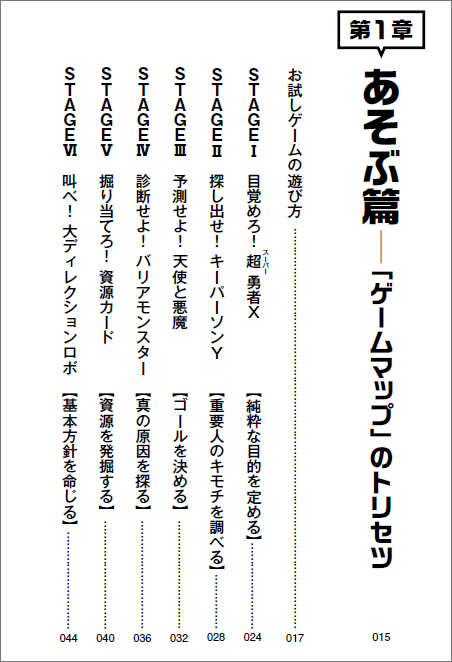Before getting bogged down in "last year's differences"
"What Matters in Planning for 2019"
When you see a title like this, you might expect content like:
"Key points to keep in mind for the rapidly changing year of 2019?"
"What are the key words for this year's planning?"...etc.
News outlets over the year-end and New Year period respond to these expectations with their own unique perspectives. For example, titles like these:
■ "Let's Talk Truthfully About How AI Will Revolutionize Work Styles"
■ "Community Business Will Transform Marketing!"
■ "Radical Change!! The New World of Video Brought by 5G"...etc.
Apologies to those expecting such content, but this article is not about that.
That said, the author does not dismiss these articles. Rather, staying constantly updated with the latest information is fundamental practice for anyone involved in strategy-making, regardless of industry.
However, there is one crucial point to keep in mind when reading these articles: they tend to place excessive focus on the "differences (between now and before)."
When phrases like "Finally, 2019!" or "The Last Year of the Heisei Era!" are used, people naturally compare "now" with "before." What's happening in the brain during this comparison is information processing akin to a "spot the difference" game. To put it dramatically, we are unconsciously compelled to search for "any differences, anywhere~."
There's nothing inherently wrong with articles titled "Ideas for 2019," but this tendency to focus on differences is dangerous for each of us navigating 2019. Staring only at the "differences" offers few hints for improving our own work tomorrow.
In fact, upon calm observation, beneath most "things that change," "things that remain unchanged" lie dormant. The six stages introduced in this book are a compilation of these "unchanging essences" from a strategic planning perspective.

Book now on sale! Details
here.
Any problem or concern can be broken down into six parts
The renowned philosopher Descartes offers incredibly concrete solutions to all troubled business professionals.

René Descartes (1596–1650)
"Break down difficulties."
Though spoken over 300 years ago, this is a timeless pearl of wisdom.
Whether it's corporate management, new ventures, marketing, sales promotion, advertising production, or even parent-child conflicts, most problems can be broken down into the following six "questions" (Q):

The 6 Essentials of Strategy Development
By answering these six Qs, you can complete the "game map"—the blueprint for strategy—for any problem.
For example, an eel restaurant in the Edo period adopted the fundamental policy of "Sell it not as a seasonal item, but as a nourishing food!" and launched the slogan "Doyo no Ushi no Hi" (the day of the ox in the dog days). As a result, despite eel being in season during autumn and winter, the custom of eating eel in summer continues to this day (various theories exist).
Behind this eel shop's action lies a solid foundation of six core elements. This book represents them with the following map.

Strategy Development by an Edo-Period Idea Man
If even one of these six Qs remains vague, no matter how much you keep thinking, unfortunately, problem-solving won't go smoothly. No matter how many ideas you list, something feels hazy, something doesn't feel quite right... In such cases, there might be an unclear part.
Incidentally, flipping the previous six Qs reveals six patterns of strategy failure.

If even one is unclear, the strategy wobbles
If you feel your current work or project isn't going well, instead of worrying vaguely, break it down into these six parts and check for any unclear areas.
Find the "Barrier Monster" in that challenge!
This book introduces the six Qs in a "stage" format, designed to be cleared with a game-like feel.

From the Table of Contents
As a trial version, here is
Stage IV: "Diagnose! Barrier Monster [Uncover the True Cause]"
.
The character appearing here is a monster with limbs sprouting from a pitch-black wall: the "Barrier Monster."

Stage IV Characters
After progressing through Stages I to III, the ideal goal (the state where you'd think "This would make me HAPPY!") becomes clear.
However, even as the path forward becomes clearer, actually changing the real world remains difficult. Why is that? It's because this monster is blocking the direct path to your ideal.
The mission of Stage IV is to explore and identify the barrier monster within that problem.
To make it easier to visualize, try thinking about it concretely in relation to your "work this week."
Have you ever spent time or held meetings brainstorming ideas (solutions) without clearly grasping the true nature of the barrier (challenge)? Meetings that persistently brainstorm without even considering the barrier tend to appear lively but often result in unproductive "barren time" with little to show for it.
Conversely, clearly identifying the barrier monster transforms that seemingly insurmountable wall into an attractive springboard that propels ideas forward. The quality of meeting discussions should also improve dramatically.
This brings us to the crucial next step: "How do we identify barriers?"
This book introduces a tool called the "Barrier Monster Guide" as an auxiliary framework for thinking.

The "Barrier Monster Guidebook" explained in Chapter 3 of the book
This tool categorizes the barrier monsters that flood the world into four types based on two axes.
① (Physical/External) Unnecessary Barrier
Even if you or your product itself hasn't changed, the emergence of attractive rivals or alternative means (different methods or items) can diminish your or your product's perceived value, leading targets to deem you "unnecessary."
② (Physical/Internal) Weakness Barrier
Factors like insufficient funds or physical decline due to aging, often seen as "weaknesses." However, what appears to be a weakness can sometimes become a powerful weapon. Therefore, it's crucial to carefully assess: "Is this weakness truly a barrier?" and "Can it be turned into a strength instead?"
③ (Psychological/External) Normality Barrier
The "common sense" and "rules" accepted within society or groups. It is precisely because these function properly that we can live our "ordinary" days with peace of mind. However, when challenging a game that involves blazing new trails, this appreciated "common sense" and "rules" can transform into an "obvious barrier" that blocks the path. In business, especially, "old customs," "precedents," and "established rules" within industries or companies often stand in the way.
④ (Psychological/Internal) Bias Barrier
A state where "dead strategies" you created in the past or your own pre-existing biases hinder the creation of new strategies. These invisible walls, built upon past experiences like "success stories" or "beliefs," are called "bias barriers." The problem is that they were once powerful allies, making it difficult to recognize them as obstacles at first glance.
Excerpt from the explanation of the four quadrants in "Barrier Monster Encyclopedia" (P120,121)
For example, at the beginning of this article, we discussed how "when people hear 'New Year,' they naturally tend to focus on 'differences.'"
For business professionals who wish to "maximize work results!" and read various news, this state can be considered a kind of "bias barrier."
It's a state where "psychological" and "internal" conditions—the structure of the brain—become shackles, causing one to obsess excessively over "change" and lose the ability to make calm judgments. As a result, attention is diverted away from the truly important "unchanging things," pushing one further from the ideal goal (maximizing work results!).
However, if you can properly grasp the existence of this monster called the "bias barrier," you won't be needlessly swayed by it. You'll be able to choose the information that's truly important to you in order to fulfill your desire to "maximize work results!"
That concludes the overview of Stage IV.
As the Heisei era ends and 2019 brings anticipated waves of further change, consider this as your first task of the year: What is the "barrier monster" for the project you're currently tackling?
But the game doesn't end here. Without the "weapons" and "strategy" to defeat this monster, you won't reach a happy ending.
That's where Stage V, and the subsequent Stage VI, come into play.
(To be continued)











